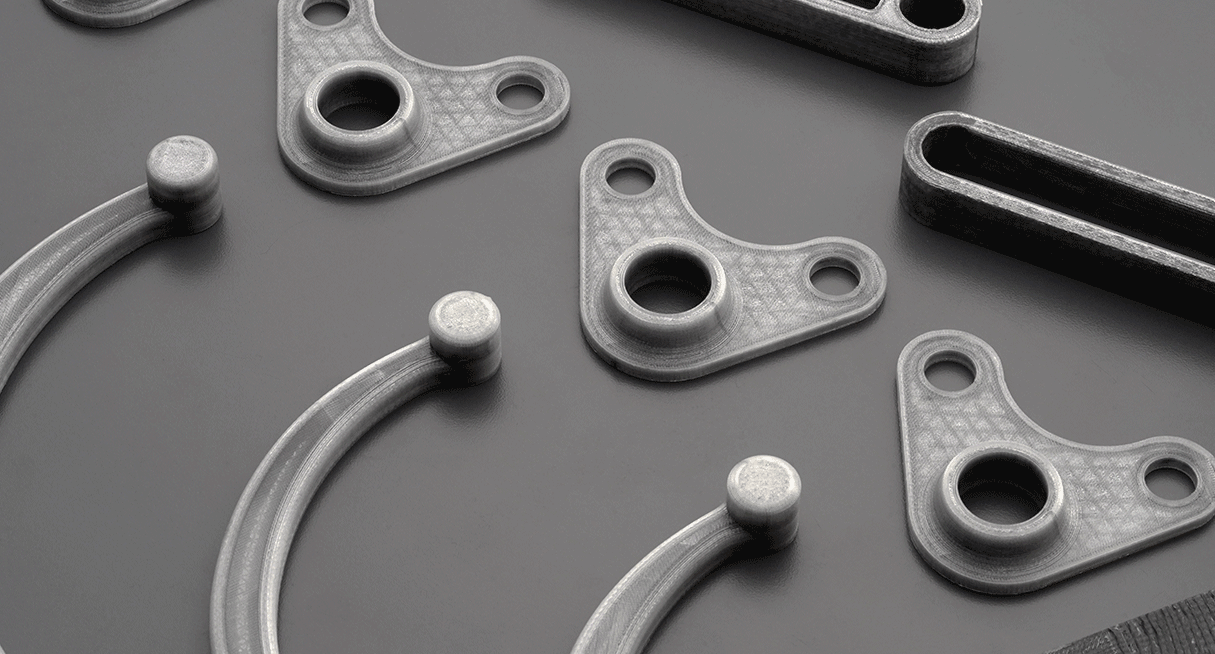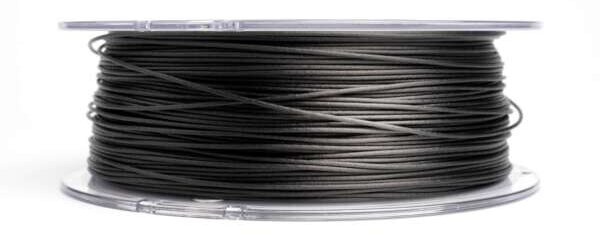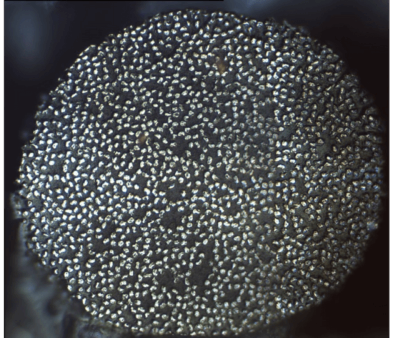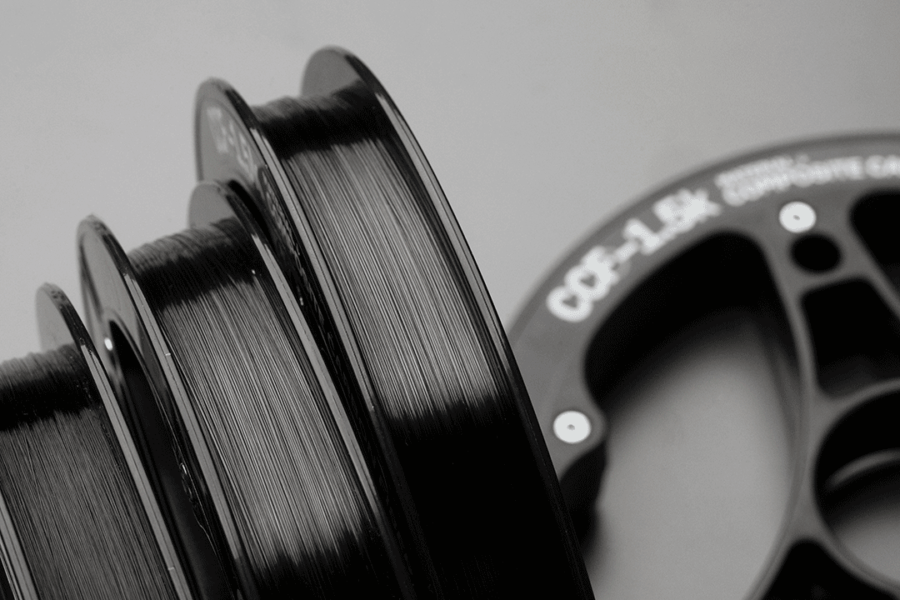
Composites in 3D Printing
Initially, plastic 3D printing started with thermoplastics — ABS, PLA, PA, PC, etc. — materials that allow a few cycles of melting and cure with their chemical properties intact. They are very convenient for extrusion and injection, melt easily when heated, flexible in creating different shapes, most of them are recyclable. However, it gives rise to a number of drawbacks. All the properties that make thermoplastics so good for extrusion are actually a poor fit for engineering application — they are not strong and durable enough to become reliable functional parts of a machine or a mechanism, the melting points for ABS and PLA are as low as ~200, they are not chemically resistant and cannot be a substitute for metal constructions.
Since plastic parts lack stiffness and strength, it is necessary to reinforce the plastics with some filler to make these parameters suitable. The materials for fillers need to meet several requirements and solve specific issues, first of all, they need to add to the mechanical properties of the resulting part. These materials are preferably to:
- make the produced parts lighter,
- cut manufacturing costs,
- have low absorption,
- be non-toxic and chemically/thermally resistant,
- be non-flammable.
Together with that, their usability is also very important:
- dispersibility of the material,
- a certain degree of flexibility that will allow smooth extrusion,
- they must mix with the polymer without pores, bubbles, or other defects,
- and they should not deteriorate or change their properties during transportation, storage, or use.
This list does not leave us with too many options for reinforcement materials.
Nowadays there are several types of fibrous reinforcement available: carbon fiber, fiberglass, basalt, and kevlar. We are specifically interested in carbon reinforcement as the most promising type. Carbon fibers are the most high performance in terms of strength and stiffness. And the main point of CFRPs is in (relative) strength and stiffness. CFRPs (carbon fiber reinforced polymers) – continuous fibers – are the best-known materials in terms of relative strength and stiffness properties.
The fiber and plastic mixed together are referred to as composite material, and parts made of it feature excellent characteristics of stiffness, strength, and compared to metal have a small weight.
As stated above, there are two ways to use carbon fibers: chopped (and filled in the plastic) and continuous (placed layer by layer).
Chopped Carbon Fiber 3D Printing

This list does not leave us with too many options for reinforcement materials.
Chopped carbon is prepared from carbon yarns that consist of strands of fibrillas. The long strings are chopped into particles under 2 mm and less, powdered and mixed with plastics like nylon, ABS, or PLA. The resulting parameters depend on plastic/carbon ratio. The bigger carbon share is, the more stiff and strong parts will be produced, however, the dependency is not linear and at some point surface of the part will be too raw and the composite itself will be not extruded and layered so smoothly and flexibly due to the small amount of plastic.
Chopped carbon fiber is the most common type of reinforcing for different plastics as it is cheap and makes manufacturing costs smaller, increases thermal resistance, makes parts stiffer, and reduces their weight, also, it makes the surface finish look neat.
Chopped carbon filament is a good starting point for improving strength to weight ratio. It is a very popular printing material as the extrusion technology is the same as for the usual plastics, so one does not have to buy another machine or extra equipment to start printing with such composites. However, it all depends on the particular material, in practice, parts printed with chopped fiber-filled filaments often show even lower mechanical properties than unfilled ones.

Artem Naumov, Head of materials at Anisoprint: “The principal difference between chopped and continuous fibers is that composites filled with chopped fibers do not give a tangible increase in strength. We can leverage or significantly improve only stiffness. At Anisoprint, we use both types of material. Though anisoprinting is based on continuous fibers for manufacturing reinforced anisotropic composites, we use chopped ones for improving surface quality, stiffness, wear resistance or improving the look of a part.”
Continuous Carbon Fiber 3D Printing
In contrast to chopped, there exists a method to reinforce plastics with continuous carbon fiber. The very idea of reinforcing with continuous carbon fiber rests on its unique properties. Its tensile strength is very high even compared to metals, which allows to create parts with anisotropy and manipulate with it in the required directions in the structure of a printed part.
That reinforcement is implemented with different technologies and gives rise to a range of adjustable parameters of the part. The common feature of continuous carbon fiber 3D printed structures is that they are more strong and reliable than metal ones, cheaper in production, and several times lighter.
Continuous fiber 3D printing is a relatively fresh idea that has not spread in the market widely as it requires special technologies and consequently specific equipment that allows 3D printing with continuous fibers.

First of all, there are several technologies for producing filament with continuous fiber. Fiber strands should be impregnated with plastics properly — without any pores or defects, otherwise it will result in poor mechanical properties and easy breaking. Adding more continuous fiber makes printed parts very strong and stiff, featuring better strength than for instance aluminum. However, packing continuous fibers too densely makes it hard to produce filament without cavities or pores.
At Anisoprint, we developed a technology to impregnate fiber strands with thermoset: due to capillarity, or wicking, thermoset quickly fills in all the space between fibrillas and forms a stiff string (after curing) that is ready for coating with a thermoplastic of any type.
This allows to keep the fiber share as high as 60% of the total volume. Structures with continuous fibers can be used for lattices.

That is not only a new tech design opportunity, but also a good way to cut costs due to economical use of material, it drastically reduces weight of such parts too. Lattices improve stiffness of structures, make them more cost-efficient, and provide ready design solutions.
Yet another prominent feature of continuous carbon fiber is boosting mechanical properties: for polymers that possess high specific wear rates in the unreinforced condition, almost any type of reinforcing fiber results in significant reductions in wear and improvement in mechanical properties. However, among all continuous carbon reinforcement grants the best tribological properties such as low wear rate in severe operating conditions and a friction coefficient = 0.1-0.2.

Fedor Antonov, Anisoprint CEO: “Orienting fibers allows the fiber properties to focus in one direction, while a random mixture dissolves the properties in every direction. That’s why continuous fiber reinforced composites have extremely high properties in the direction of the fibers and short fiber reinforced polymers have fairly modest properties in all directions. This difference is an order of magnitude at least.”
Carbon Fiber 3D Printing: Diverse Technologies
As we mentioned above, chopped and continuous fiber printing require different technologies, and a conventional FDM (fused deposition modeling) print head cannot be used for continuous fiber reinforcement. The extrusion process for plastic and filled plastic is the same, while continuous fiber placement requires either a separate nozzle to supply the reinforced filament or the single nozzle head needs to have a specific construction for mixing the fiber with the matrix. Some technologies make use of a compaction roller to press the reinforcement in. Using a heating laser that melts the layers together is usually referred to as direct energy deposition (DED).
Last but not least, here the software plays a major part: correctly set parameters prevent clogging, provide optimal slicing based on the matrix material and the model itself, different parameter sets are capable of producing different parts in terms of the volume fraction of the reinforcing fiber and the way it is layered in the matrix material.
The anisotropy, the property of a material that allows it to change or assume different properties in different directions, and fiber share can be manipulated and produce a part with very diverse internal structures that exhibit different behavior. For instance, the volume ratio of fibers and matrix can be 60% to 40%, 70% to 30%, 80% to 20%, or other. It is important when we know what kind of load the part should bear and in what direction it will be stressed or bent.
